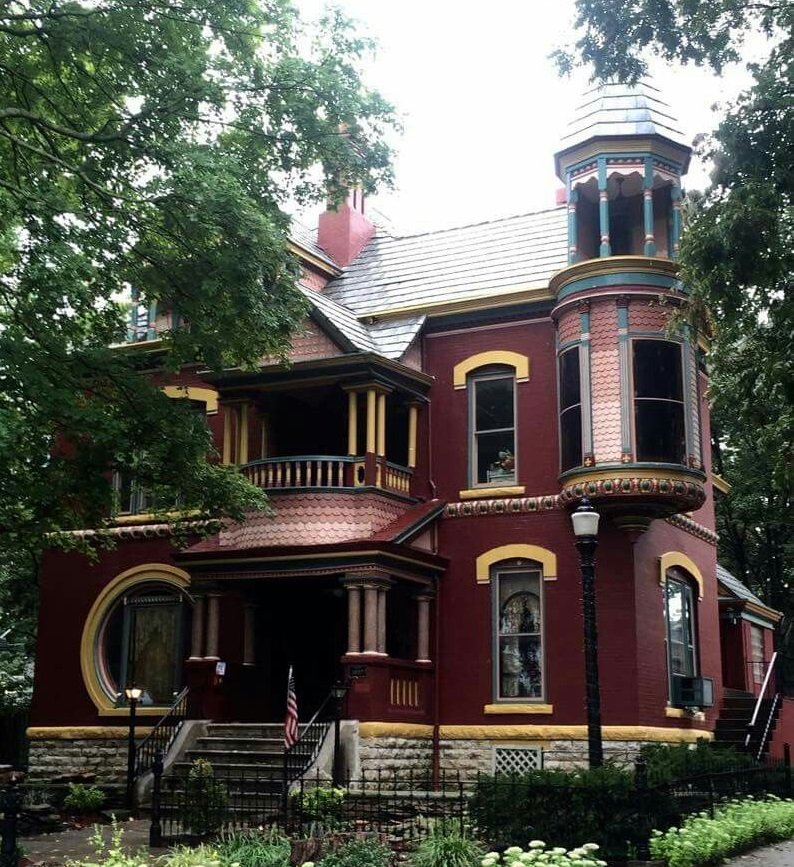#14864. Majestic Victorian Mansion with Burgundy Facade and Golden Accents

Before us stands a magnificent example of Victorian-era architecture, striking with its luxurious detailing and color palette. The rich burgundy brick facade serves as the perfect background for accent elements in golden-yellow, which elegantly frame the window openings and highlight architectural details. Particularly noteworthy is the corner tower with its decorative roof and multi-faceted structure — a dominant compositional element that gives the building its recognizable silhouette.
The facade demonstrates a complex interplay of geometric forms: circular, rectangular, and arched windows create a rhythmic visual pattern. The two-story veranda with columns and balustrade adds elegance and functionality to the building. The architect's mastery is evident in every detail — from the decorative brackets under the cornices to the skillfully executed masonry, forming various textures on the wall surfaces.
The stone foundation creates a solid visual base for the building, while the contrasting trim around windows and doorways adds depth to the overall composition. When designing a modern facade, several techniques from this historical example can be borrowed: the contrasting combination of the main color with accent elements, the use of various textures to create visual interest, and careful attention to the proportions of architectural details.